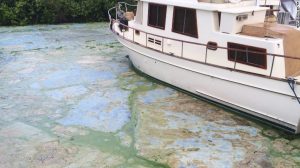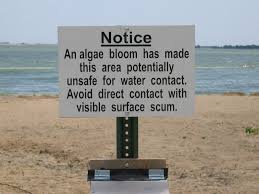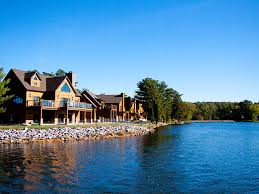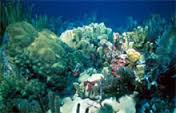Less than two months ago, Clean Water Warrior (CWW) noted that the Florida Keys, and the fragile coral reef surrounding them, were always at risk from Harmful Algae Blooms (HAB). These blooms are largely caused by hot weather and, just as importantly or perhaps even more so, rain-induced nutrient runoff from agriculture and communities.
Today, as the Army Corp of Engineers drains water from Lake Okeech0bee — the result of unusually heavy rains from the 2016 rainy season (tied, of course, to global warming) – South Florida is in a full-blown HAB crisis.
This quote, taken from CNN’s excellent July 1, 2016 coverage of the HAB crisis, tells the grim tale as well as any:
Jordan Schwartz, owner of the Ohana Surf Shop, said he wanted to cry when he saw the green slime — a toxic algae bloom — covering his swath of Stuart Beach on Florida’s east coast.
The typical rogues gallery of offenders, which working in concert typically explain why HAB’s appear,

is again at work. Too much rain,creating too much runoff, flowing with too few natural or man-made restrictions into waterways that eventually pour too much phosphorus and nitrogen into slower moving waters, lakes, and, in this case, ocean shoreline.



